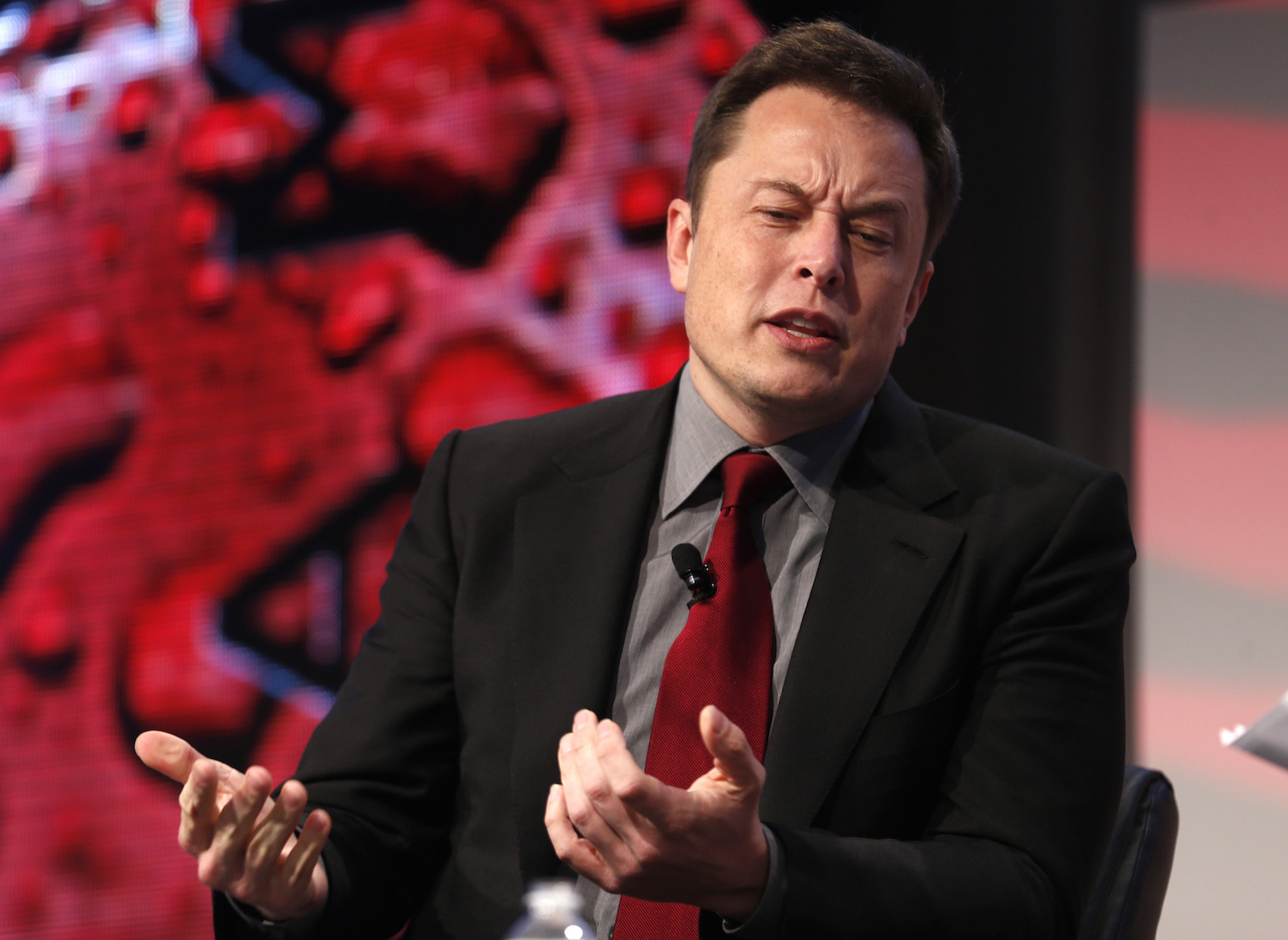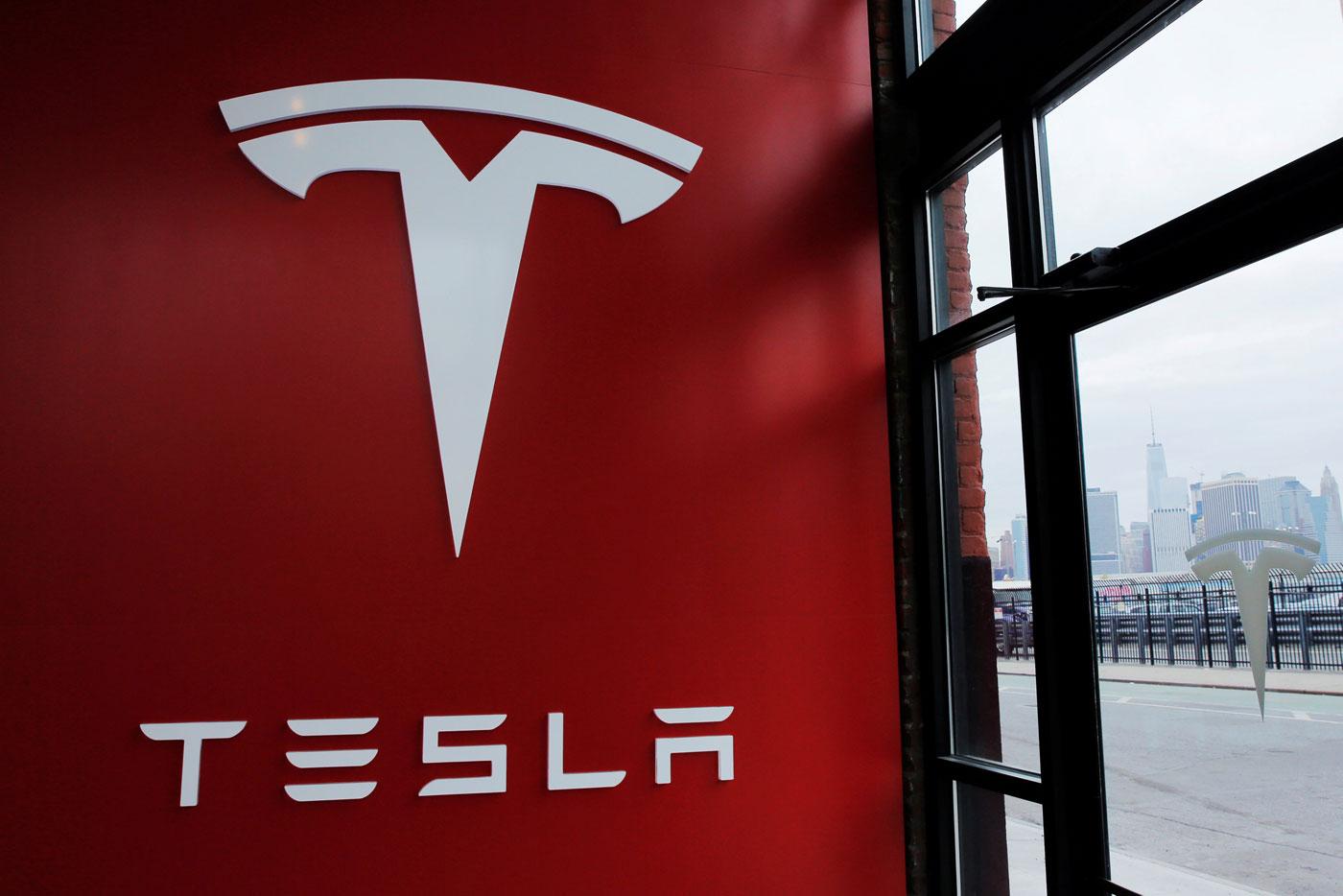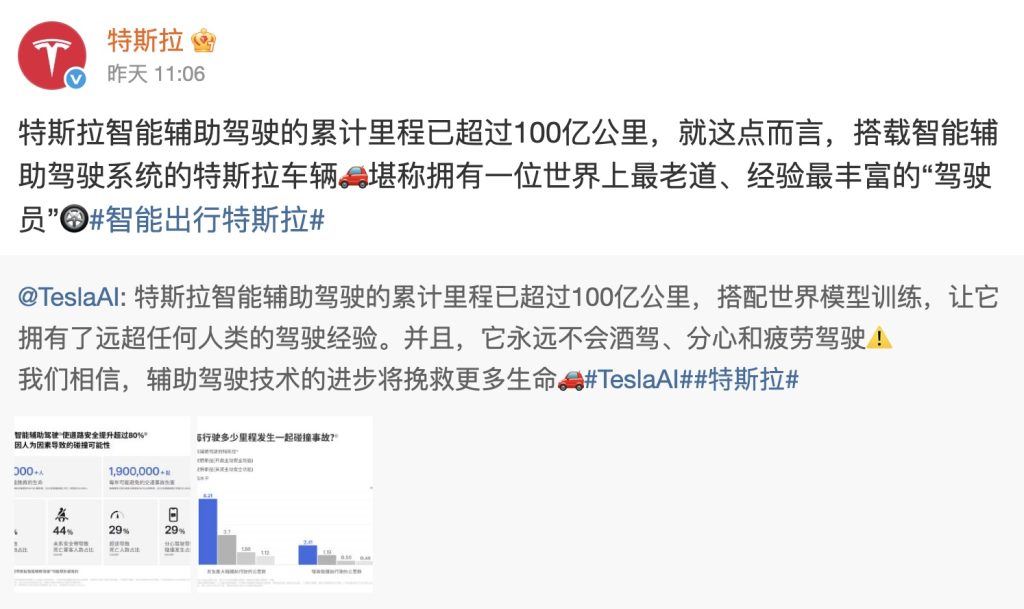News
Breitbart’s nod to Elon Musk is so, so scary

Breitbart News Network featured a story this week on its website called “Elon Musk’s Tesla Stock Up $2 Billion Since Joining Trump’s Team.” The story argues that, as a result of recent Tesla stock increases, Musk owes allegiance to Donald Trump. Attention from the far-right Breitbart website, which is the most viewed U.S. conservative news, opinion, and commentary source in the U.S., comes at a time in which Elon Musk’s reputation has been questioned by his once-loyal following.
Why is the Breitbart story such bad timing for Musk?
Breitbart is known as the most significant misinformation site on the Internet. Privileging one set of representations over another, discourses like those typical within the Breitbart publication tend to claim the status of truth. Their discourses, which work as truth statements, make it difficult for many readers to identify how reality is shaped. Breitbart’s executive chairman, Steve Bannon, aligned the site so specifically toward a Trump vision of the world during the 2016 Presidential election that employees began to raise concerns about it being little more than a “fan club” for Trump.
Moreover, the right-wing outlet has been accused by some as being a hate site. Breitbart engages in coordinated plans to bring their particular brand of intolerance to the political realm in because their style of propaganda works well. Linked to relations of power, the Breitbart stories tend to be constructed and reinforced by those in professional positions like Bannon who hold a particular authority and, thus, create knowledge about certain subjects like climate change, health care, and trade.
In the article about Elon Musk this week, Breitbart referred to individuals who seek equality for all as “the left’s social justice warriors” and described Twitter reactions to Musk’s collaboration with Trump as “vicious colorful language that cannot be reported.” The implication here is that Musk followers are immoral, disreputable people whose language is so coarse that it is would clearly offend the enlightened Breitbart readership.
Yes, this was a week in which the Tesla Motors, Inc. CEO found himself defending his position on Trump’s executive order that limits immigration from seven predominantly Muslim countries. Musk has become a target of malaise due to his role on Trump’s manufacturing council. Disgruntled fans tweeted about how Musk could design a Mars mission but fail to retract a “BS Muslim ban;” what ownership of the competitor’s Chevy Volt would be like; and, his position on AG Sally Yates’ dismissal over the immigration issue. Some tweets, on the other hand, also supported Musk and implored him “to make a positive impact.”
Breitbart recounted that Musk’s attendance on “an official White House committee” (i.e. the Strategic and Policy Forum) on January 27 generated controversy. Breitbart characterized the comments as “mournful,” which cast Musk as leader of a losing battle to limit anthropogenic climate change through decentralized energy, especially the remarkable Tesla electric vehicle line. Breitbart noted Musk’s reply, which included, “It’s getting me down. I’m just trying to make a positive contribution & hope good comes of it.” Interestingly, the publication allowed Musk’s empathy and altruism to shine through the otherwise negative narrative.
Breitbart also added in the article that, “when it comes to U.S. employment and manufacturing, Musk’s companies are near or at the top as the fastest-growing players.” It seems clear from this statement that the Trump administration recognizes the power that Elon Musk has to create U.S. jobs and further the country’s emergence from the biggest economic downturn since the Great Depression. Breitbart’s care in recognizing Musk’s wherewithal suggests that the Trump administration is looking down the GNP road and wants to keep Musk close by, regardless of Musk’s opposite political beliefs and progressive values, just in case.
Musk’s use of Twitter to inform, educate, and empower
Twitter can be a site where democracy, messy as it can be, is at its best. Twitter’s multiple viewpoints allow for rich, if sometimes uncomfortable discourse. Musk understands this and engages in conversations with the public as a means of communication, education, and empowerment. For example, he wanted his followers to be intimately knowledgeable with the immigration order and to let him know “specific amendments,” which he would then bring to the advisory council to seek “consensus & present to President” Trump.
Please read immigration order. Lmk specific amendments. Will seek advisory council consensus & present to President. https://t.co/qLpbsP4lEk
— Elon Musk (@elonmusk) January 29, 2017
Indeed, Musk asked his followers to read “the source material” of the immigration ban; it is a way to infuse voices of reason and expertise rather than emotion and hyperbole into the conversation. That request, in turn, fostered a conversation about the importance of reading original documents and reports, rather than relying on tertiary sources for deconstruction and explanation. It was a lesson that many could have learned during the 2016 Presidential campaign, which was rife with fake news.
Yes, the order is still bad, but it is always important to read the source material
— Elon Musk (@elonmusk) January 30, 2017
Rather than the “Trump / Musk charm offensive” that Breitbart suggests is the reason for Tesla’s rising stock prices, perhaps we should look to the Trump effect as just one of multiple reasons why Tesla is on the rise. The acquisition of Solar/City, the announcement of solar roof tiles, the 2017 production of the new Model 3, production at the Nevada Gigafactory, SpaceX series of successes… the list of recent accomplishments is quite long. Investors like to back a winner, and, even if Musk must hold his nose as he negotiates with Donald Trump and his advisers, the value of Tesla will continue to be robust.
It’s just not the White House that so many of us, Musk included, envisioned just a few months ago. And Breitbart’s entry to the field is scary enough for many of us to take notice. Be strong, Elon; you’re going to need tenacity to stay a step ahead. We know you’ll probably have to step up more than you originally anticipated when you agreed to serve. Thanks for taking on this huge responsibility on behalf of U.S. progressives.

News
Tesla accused of infringing robotics patents in new lawsuit

Tesla is being accused of infringing robotics patents by a company called Perrone Robotics, which is based out of Charlottesville, Virginia.
The suit was filed in Alexandria, Virginia, and accuses Tesla of knowingly infringing upon five patents related to robotics systems for self-driving vehicles.
The company said its founder, Paul Perrone, developed general-purpose robotics operating systems for individual robots and automated devices.
Perrone Robotics claims that all Tesla vehicles utilizing the company’s Autopilot suite within the last six years infringe the five patents, according to a report from Reuters.
Tesla’s new Safety Report shows Autopilot is nine times safer than humans
One patent was something the company attempted to sell to Tesla back in 2017. The five patents cover a “General Purpose Operating System for Robotics,” otherwise known as GPROS.
The GPROS suite includes extensions for autonomous vehicle controls, path planning, and sensor fusion. One key patent, U.S. 10,331,136, was explicitly offered to Tesla by Perrone back in 2017, but the company rejected it.
The suit aims to halt any further infringements and seeks unspecified damages.
This is far from the first suit Tesla has been involved in, including one from his year with Perceptive Automata LLC, which accused Tesla of infringing on AI models to interpret pedestrian/cyclist intent via cameras without licensing. Tesla appeared in court in August, but its motion to dismiss was partially denied earlier this month.
Tesla also settled a suit with Arsus LLC, which accused Autopilot’s electronic stability features of infringing on rollover prevention tech. Tesla won via an inter partes review in September.
Most of these cases involve non-practicing entities or startups asserting broad autonomous vehicle patents against Tesla’s rapid iteration.
Tesla typically counters with those inter partes reviews, claiming invalidity. Tesla has successfully defended about 70 percent of the autonomous vehicle lawsuits it has been involved in since 2020, but settlements are common to avoid discovery costs.
The case is Perrone Robotics Inc v Tesla Inc, U.S. District Court, Eastern District of Virginia, No. 25-02156. Tesla has not yet listed an attorney for the case, according to the report.
News
Tesla has passed a critical self-driving milestone Elon Musk listed in Master Plan Part Deux
Tesla China announced that the company’s Autopilot system has accumulated 10 billion kilometers of driving experience.

Tesla has passed a key milestone, and it was one that CEO Elon Musk initially mentioned more than nine years ago when he published Master Plan, Part Deux.
As per Tesla China in a post on its official Weibo account, the company’s Autopilot system has accumulated over 10 billion kilometers of real-world driving experience.
Tesla China’s subtle, but huge announcement
In its Weibo post, Tesla China announced that the company’s Autopilot system has accumulated 10 billion kilometers of driving experience. “In this respect, Tesla vehicles equipped with Autopilot technology can be considered to have the world’s most experienced and seasoned driver.”
Tesla AI’s handle on Weibo also highlighted a key advantage of the company’s self-driving system. “It will never drive under the influence of alcohol, be distracted, or be fatigued,” the team wrote. “We believe that advancements in Autopilot technology will save more lives.”
Tesla China did not clarify exactly what it meant by “Autopilot” in its Weibo post, though the company’s intense focus on FSD over the past years suggests that the term includes miles that were driven by FSD (Beta) and Full Self-Driving (Supervised). Either way, 10 billion cumulative miles of real-world data is something that few, if any, competitors could compete with.


Elon Musk’s 10-billion-km estimate, way back in 2016
When Elon Musk published Master Plan Part Deux, he outlined his vision for the company’s autonomous driving system. At the time, Autopilot was still very new, though Musk was already envisioning how the system could get regulatory approval worldwide. He estimated that worldwide regulatory approval will probably require around 10 billion miles of real-world driving data, which was an impossible-sounding amount at the time.
“Even once the software is highly refined and far better than the average human driver, there will still be a significant time gap, varying widely by jurisdiction, before true self-driving is approved by regulators. We expect that worldwide regulatory approval will require something on the order of 6 billion miles (10 billion km). Current fleet learning is happening at just over 3 million miles (5 million km) per day,” Musk wrote.
It’s quite interesting but Tesla is indeed getting regulatory approval for FSD (Supervised) at a steady pace today, at a time when 10 billion miles of data has been achieved. The system has been active in the United States and has since been rolled out to other countries such as Australia, New Zealand, China, and, more recently, South Korea. Expectations are high that Tesla could secure FSD approval in Europe sometime next year as well.
Elon Musk
SpaceX maintains unbelievable Starship target despite Booster 18 incident
It appears that it will take more than an anomaly to stop SpaceX’s march towards Starship V3’s refinement.

SpaceX recently shared an incredibly ambitious and bold update about Starship V3’s 12th test flight.
Despite the anomaly that damaged Booster 18, SpaceX maintained that it was still following its plans for the upgraded spacecraft and booster for the coming months. Needless to say, it appears that it will take more than an anomaly to stop SpaceX’s march towards Starship V3’s refinement.
Starship V3 is still on a rapid development path
SpaceX’s update was posted through the private space company’s official account on social media platform X. As per the company, “the Starbase team plans to have the next Super Heavy booster stacked in December, which puts it on pace with the test schedule planned for the first Starship V3 vehicle and associated ground systems.”
SpaceX then announced that Starship V3’s maiden flight is still expected to happen early next year. “Starship’s twelfth flight test remains targeted for the first quarter of 2026,” the company wrote in its post on X.
Elon Musk mentioned a similar timeline on X earlier this year. In the lead up to Starshp Flight 11, which proved flawless, Musk stated that “Starship V3 is a massive upgrade from the current V2 and should be through production and testing by end of year, with heavy flight activity next year.” Musk has also mentioned that Starship V3 should be good enough to use for initial Mars missions.
Booster 18 failure not slowing Starship V3’s schedule
SpaceX’s bold update came after Booster 18 experienced a major anomaly during gas system pressure testing at SpaceX’s Massey facility in Starbase, Texas. SpaceX confirmed in a post on X that no propellant was loaded, no engines were installed, and personnel were positioned at a safe distance when the booster’s lower section crumpled, resulting in no injuries.
Still, livestream footage showed significant damage around the liquid oxygen tank area of Booster 18, leading observers to speculate that the booster was a total loss. Booster 18 was among the earliest vehicles in the Starship V3 series, making the failure notable. Despite the setback, Starship V3’s development plans appear unchanged, with SpaceX pushing ahead of its Q1 2026 test flight target.








